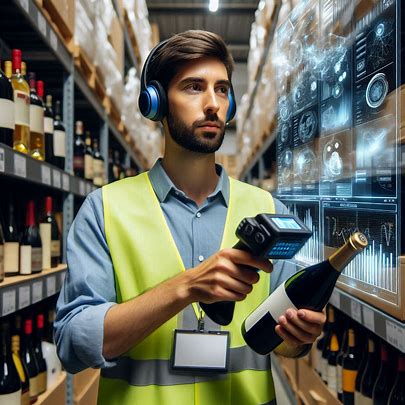 Online shopping has changed how we buy everything, including liquor. With a few clicks, you can have premium spirits delivered to your door. But what powers this seamless experience? The technology behind online liquor platforms combines robust security, intuitive design, and smart logistics to make purchasing alcohol safe and easy. Let’s dive into the systems and features that let you stock your bar without leaving home.
Online shopping has changed how we buy everything, including liquor. With a few clicks, you can have premium spirits delivered to your door. But what powers this seamless experience? The technology behind online liquor platforms combines robust security, intuitive design, and smart logistics to make purchasing alcohol safe and easy. Let’s dive into the systems and features that let you stock your bar without leaving home.
At the core of platforms like The Barrel Reserve, the ability to buy liquor hinges on sophisticated e-commerce systems. These platforms use content management systems (CMS) like Shopify or WooCommerce to handle product listings, inventory, and transactions. A CMS ensures that when you browse for a bottle of whiskey, the site reflects real-time stock. Meanwhile, integrated payment gateways, such as Stripe or PayPal, process your purchase securely. Encryption protocols, like SSL certificates, protect your personal and financial data, ensuring every click is safe.
Security: Keeping Your Purchase Safe
Buying alcohol online comes with strict regulations. Age verification is a must. Platforms employ advanced tools to confirm you’re over 21. For instance, many use third-party services like IDology or Veratad to scan IDs during checkout. Some even require a signature upon delivery to verify the recipient’s age. These measures comply with state laws, which vary widely. In states like California, you can order freely, but places like Utah ban alcohol deliveries entirely. Robust backend systems track these regulations, automatically restricting sales where needed.
Beyond age checks, cybersecurity is critical. Online liquor stores use firewalls and tokenization to safeguard your data. Tokenization replaces sensitive information, like credit card numbers, with unique codes. This means even if a hacker breaches the system, they can’t access your details. Additionally, platforms often display security badges to build trust. When you see a padlock icon or “HTTPS” in the URL, you know your transaction is protected.
User Experience: Smooth and Simple
Ever wonder why browsing an online liquor store feels so effortless? That’s no accident. User experience (UX) design plays a huge role. Clean layouts, high-quality images, and detailed product descriptions make it easy to choose your drink. Filters let you sort by type, price, or brand, while search algorithms suggest related items. For example, if you’re eyeing a bourbon, the site might recommend a craft mixer to pair with it.
Moreover, responsive design ensures the site works on any device. Whether you’re shopping on your phone or laptop, the interface adapts. This is powered by front-end frameworks like React or Vue.js, which create fast, dynamic pages. Behind the scenes, databases like MySQL store customer preferences, so your next visit feels personalized. Ever notice how a site remembers your cart? That’s session management at work, using cookies to save your selections.
Logistics: From Click to Doorstep
Once you hit “buy,” the real magic happens. Order management systems (OMS) kick into gear, coordinating with warehouses and shipping partners. Platforms integrate with carriers like FedEx or UPS, which specialize in alcohol delivery. These systems calculate shipping costs, estimate delivery times, and ensure compliance with local laws. For instance, some states require alcohol to be shipped in marked packages to prevent underage access.
Inventory management is equally vital. Real-time tracking prevents overselling. If a bottle of tequila is out of stock, the site updates instantly, sparing you frustration. Some platforms even use AI to predict demand, ensuring popular items stay available. And if you’re wondering about that speedy delivery? Geolocation tech routes your order to the nearest warehouse, cutting down wait times.
Why It Matters
Buying liquor online isn’t just convenient—it’s a tech marvel. From secure payments to smart logistics, every step is designed to make your experience smooth. Next time you order a bottle, you’ll know the complex systems working behind the scenes. So, kick back, browse your favorite platform, and let technology bring the bar to you. What’s your next drink going to be?

 The landscape of digital marketing has significantly evolved over the years, thanks in large part to advancements in internet technology. Today, a successful business is not merely about having an online presence; it’s about ensuring that your website is seen by the right people at the right time. This is where Search Engine Optimization (SEO) enters the scene. As the wheels that drive the vehicle of online visibility, SEO and internet technology are integral parts of any successful digital marketing strategy.
The landscape of digital marketing has significantly evolved over the years, thanks in large part to advancements in internet technology. Today, a successful business is not merely about having an online presence; it’s about ensuring that your website is seen by the right people at the right time. This is where Search Engine Optimization (SEO) enters the scene. As the wheels that drive the vehicle of online visibility, SEO and internet technology are integral parts of any successful digital marketing strategy.